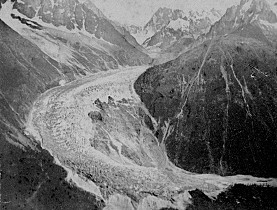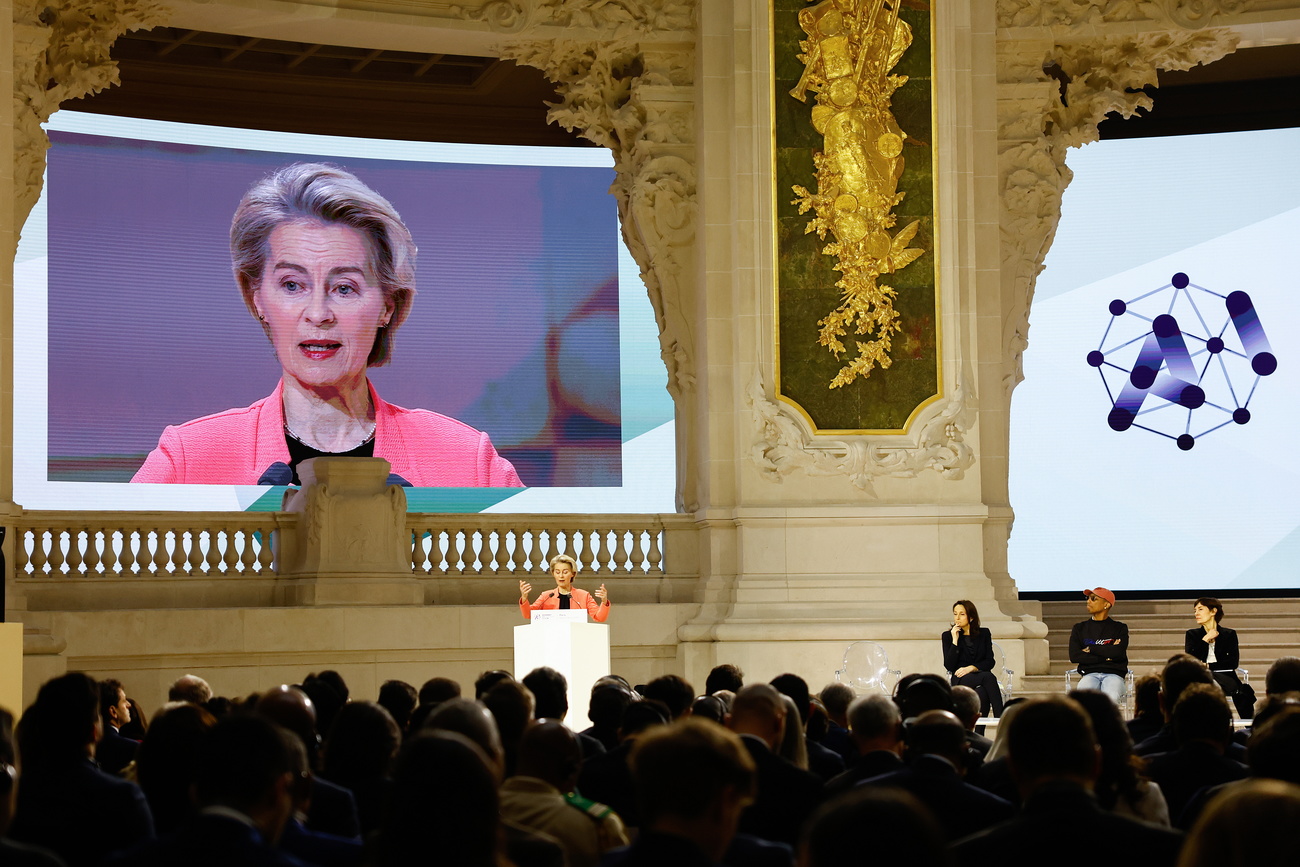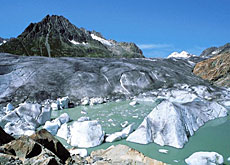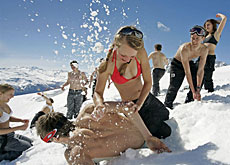Glaciers seen through the eyes of Old Masters

One day in 1802, young English painter J. M. W. Turner picks a spot in the French Chamonix Valley with a fine view of Mont Blanc's Mer de Glace and starts to sketch.
More than two hundred years later a young Swiss geographer, armed with Turner’s drawing, searches the glacial terrain to find the same place where the artist once stood and takes out his camera.
By comparing Turner’s landscape with the present day view, Samuel Nussbaumer has been able to determine quite accurately the position of the Mer de Glace glacier at that time.
Matching up the past with the present is a special skill. “Today in the foreground of the Mer de Glace you have a forest and the river changes course all the time. So it’s very important to see the background of the painting or the drawing,” Nussbaumer told swissinfo.
“That was the case with the Turner picture where I could determine the front position of the glacier quite well by setting the background into the right position.”
With the aim of reconstructing the history of the Mer de Glace, researchers from Bern University, supported by the Swiss National Science Foundation, have been sifting through historical documents, maps, drawings, paintings and photographs.
Hamlets destroyed
Some of the material dates back as far as the sixteenth century. This includes a petition to the tax authorities by a group of farmers living in the valley. They were looking for tax exemption because the glacier was encroaching on their lands. The two hamlets concerned, Châtelard and Bonanay, were eventually engulfed by the sea of ice and ceased to exist.
It may be hard for us today to imagine glaciers growing but European glaciers advanced and retreated several times during the “Little Ice Age” from the end of the late Middle Ages (1300 – 1500) to the late nineteenth century.
“The whole Little Ice Age was a glacier-friendly period with cold summers and winters with lots of snow,” Nussbaumer explained. The Mer de Glace glacier reached its maximum in the 1640s. This was the first peak and it was followed by two other peaks in around 1820 and 1850.
Nussbaumer, in collaboration with Heinz Zumbühl and Daniel Steiner, recently published the results of the multi-disciplinary glacier research in a scientific journal.
The researchers from the Institute of Geography previously used the same methods to track fluctuations in the Lower Grindelwald glacier in Switzerland’s Bernese Oberland.
Their results show that the French and Swiss glaciers reacted in a parallel manner despite geographical and climatic differences.
Rich collection
Most of the images used in Nussbaumer’s research come from the collection of Zumbühl, an art historian and geographer who also teaches urban history. Zumbühl has up to 60,000 images.
They include Zumbühl’s own landscape photographs and his slides and films of original works of art and old photographs. Since the 1960s Zumbühl has visited countless museums and archives, photographing images of the Alps.
“I found a lot of material in England in the British Museum and the Alpine Club and in other museums. The biggest collections of top quality old photos are in England,” he told swissinfo. English artist John Ruskin produced the first Mer de Glace photographs in 1849.
Zumbühl explained that the upsurge in popularity of the alpine glaciers among English and other tourists in the mid nineteenth century was linked to the Ice Age theory which gained acceptance around this time. “Everybody wanted to see the last remaining little glaciers of the Ice Age.”
Scandinavia
The popularity of the glaciers studied by Nussbaumer and Zumbühl is what makes them good subjects. Only the most famous and accessible glaciers have the necessary quantity of research material. The first tourists started coming, and sketching, in the mid eighteenth century.
Most of these sites are in the Alps but there are some in Scandinavia too and that is where Nussbaumer is heading to for his next research project.
“The main focus of my work will be the comparison with glacier fluctuations in Scandinavia because the historical documents there haven’t been worked on as much as the Alps.”
In view of the clear effects of global warming on the Alps, – the glaciers are losing volume dramatically – Nussbaumer believes it is very important to get more detailed knowledge about glacier fluctuations in the past.
“Only then is it possible to judge whether glacier variations lie within natural variability or not,” he said.
Switzerland has about 1,800 glaciers, ranging from the 23km-long Aletsch to glaciers of just a few metres in diameter. Almost all of them are retreating.
Experts say that if temperatures rise by an average of three degrees Celsius, 80% of the glaciers will have disappeared by 2100. A rise of five degrees would lead to their total disappearance.
The alpine glaciers are a major source of water not only in Switzerland but also for the whole of western Europe.
The Mer de Glace in France is a valley glacier 12 km long located on the Northern slopes of Mont Blanc. It covers a territory of approximately 32 sq km, going from 4,000m altitude to 1500m. It is the largest and longest glacier in the western Alps.
Where to find the work of the best and most prolific alpine artists of the 18th and 19th century, according to Heinz Zumbühl:
The Art Museum in Aarau has the biggest Caspar Wolf (1735 – 1783) collection in Switzerland.
Basel’s Art Musuem has the biggest collection of Samuel Birmann (1793 – 1847).
Geneva’s Art Museum and the Art Museum in Annecy, France, for Jean-Antoine Linck (1766 – 1843).

In compliance with the JTI standards
More: SWI swissinfo.ch certified by the Journalism Trust Initiative











You can find an overview of ongoing debates with our journalists here . Please join us!
If you want to start a conversation about a topic raised in this article or want to report factual errors, email us at english@swissinfo.ch.